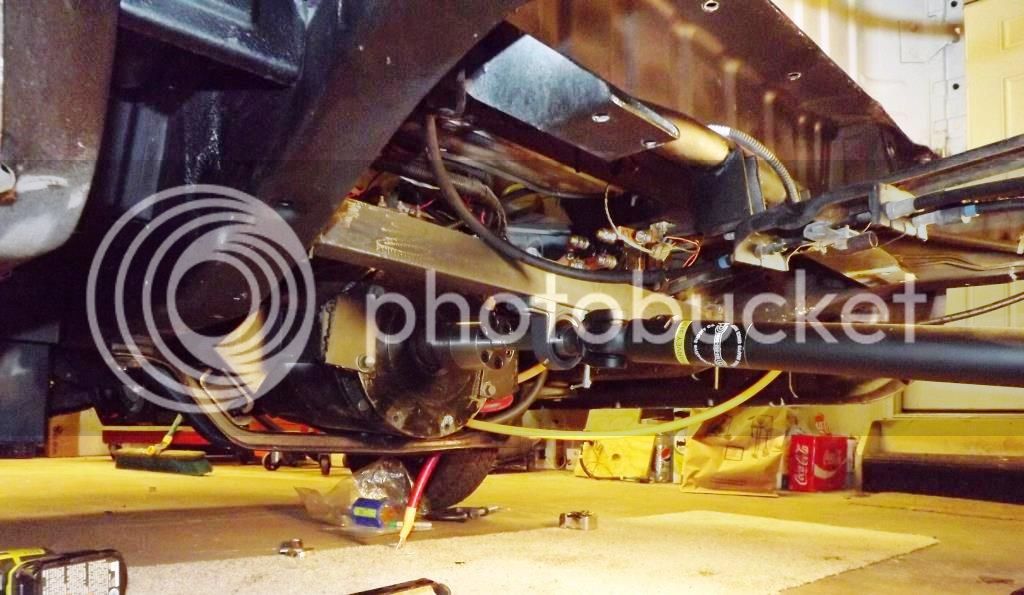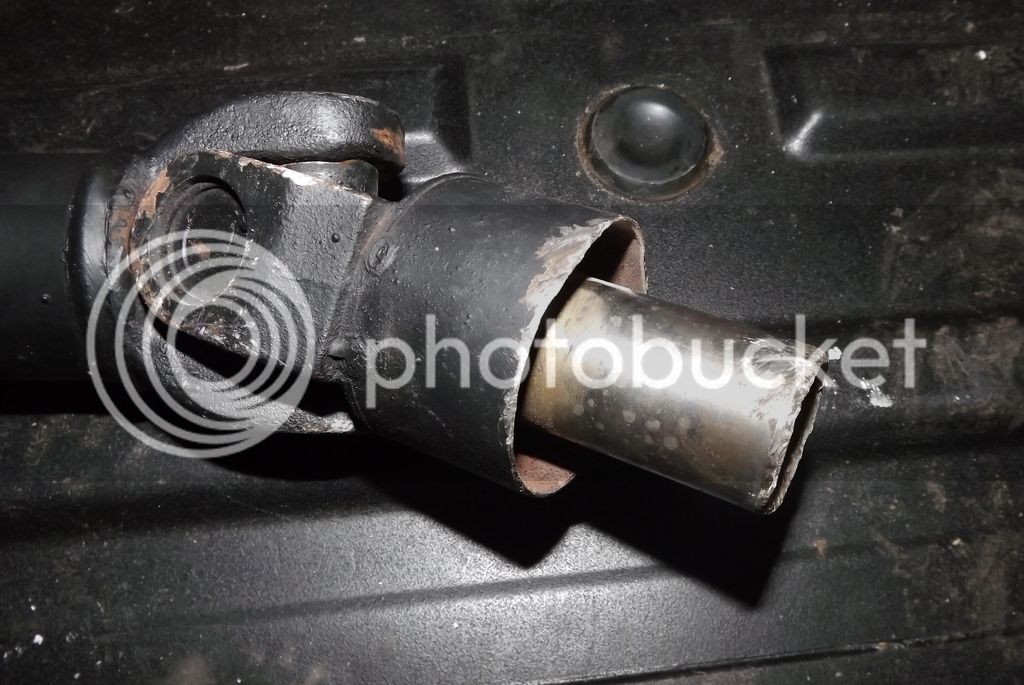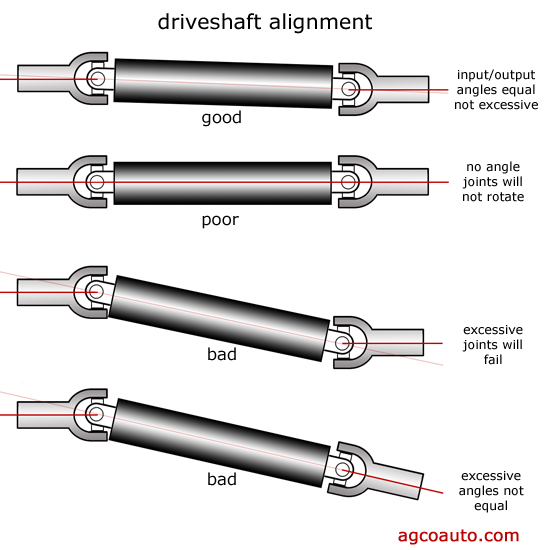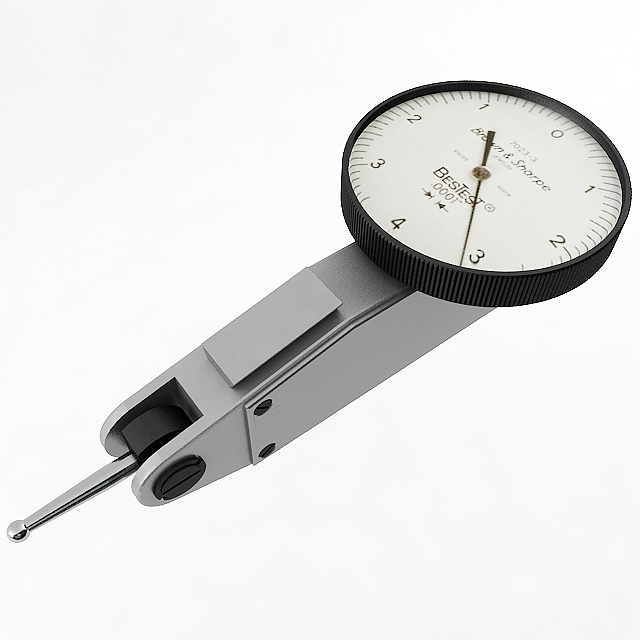Well, things are not looking much better yet. I had a second motor adapter piece built, with much more bulk and strength than the first one:

We built a cross-member to mount the support bearing to, and attached it to the frame with some nut plates we fab'd up. Here it is all in place:

Unfortunately, this did not cure the vibration problem, and the adapter still would not stay put on the motor spindle. The three set screws were not enough. So I had 7 more set screws added to the base adapter piece. Still no dice. I can get the adapter to go on straight, but I can't get it to stay put. The truck will drive ok up to about 30 mph, but it you get much above that, it starts shaking like mad. The consensus seems to be that for the rpm's I'm after (up to about 5,000) I'll need a much better-balanced and less bulky adapter. Ideally, I need a slip yoke that will slip directly onto the motor shaft, enabling elimination of the adapter altogether.
In theory this is relatively simple....but I'm having a hell of a time finding a part that will mate to the splined shaft of the motor. The shaft has an odd size and spline pattern that does not seem to exist in the automotive or agricultural PTO worlds. I found an automotive slip yoke with the right pattern (Spicer 3-3-6701X), but it is about .1" too large in diameter. This is probably too much to take up with rubber coating or other means that I'm aware of. A suitable part may exist in the forklift world, but parts in that realm seem to be much less well-indexed, and since I don't know what kind of lift my motor came from originally, finding a mating lift part may be very difficult, but I suppose I may have to try. Even if I can find a part that mates to the shaft, it may not be something that can be fashioned into a slip yoke. I spoke with Net Gain Motors...they had nothing, and pointed me to a clutch and driveline shop in IL. They also had nothing, and pointed me to a device called the TranTorque. It's basically a high-strength compression-force shaft coupler made by a company called Fenner. Does anyone have any experience with this device? If this can't be made to work, then I'm likely down to having a custom part made, which will cost hundreds of dollars and require removal and hauling of the motor to the machine shop that makes the piece--something I'd rather not do if I can avoid it. OR, I will have to change motors to something I can mate to more easily, something else I'd rather not do at this point. This one aspect is turning into a real nightmare. Any advice is appreciated.
On the plus side, I have managed to mount the motor controller in a decent place behind the seats, and fashioned a plastic cover to keep hands off the high Voltage. The reversing contactor is in place and working. The damaged harness inside the dash has been fixed. And, the front section of the splash pan is nearly complete:

This includes a few pieces, including a rubber upper section that is riveted underneath the cabin floor. More pics are at the photobucket page. I'm trying to keep going as I can, but unless I can get this driveline issue sorted out, this will never amount to anything. Trudging on.....










